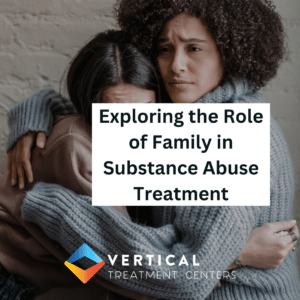
Exploring the Role of Family in Substance Abuse Treatment
Substance abuse is an issue that extends far beyond the individual—it also significantly impacts families. This blog post delves into how family involvement can crucially influence the process and outcomes of substance abuse treatment.
II. Understanding Substance Abuse as a Family Issue
Substance abuse doesn’t exist in a vacuum. It’s intricately tied to family dynamics, relationships, and the well-being of individual family members. The family disease model illustrates this concept by viewing substance abuse as a disease affecting the entire family system.
III. The Family’s Influence on Treatment Admission
Family pressure and support often serves as the catalyst for an affected individual to recognize their need for treatment. In many cases, they are the ones who plan and enact interventions, thus facilitating the individual’s entry into treatment programs.
IV. Family Roles and Patterns in Substance Abuse
In households affected by substance abuse, family members often unknowingly adopt distinct roles that may perpetuate the problem. These roles range from enablers to scapegoats or heroes. Recognizing and addressing these patterns can lead to healthier dynamics that support recovery.
V. The Benefits of Family Involvement in Treatment
Family involvement in substance abuse treatment often results in improved outcomes, such as decreased rates of relapse and heightened treatment adherence. Furthermore, it fosters better communication within the family and healthier relationships among members.
VI. Family-Based Therapy Modalities
Several therapy models specifically focus on integrating family into treatment. For instance, the Family Disease Model treats the family as a whole, while the Family Systems Model addresses the roles and relationships within the family that perpetuate substance use. The Community Reinforcement Approach focuses on creating an environment conducive to sobriety and recovery.
VII. Setting Boundaries and Healing Together
For the health of the family and the individual in recovery, it’s crucial to establish healthy boundaries. It’s equally important for the family healing process to address co-dependency, enabling behaviors, and the emotional toll of living with a loved one’s substance abuse.
VIII. Support Networks for Families during Treatment
Families don’t have to face this journey alone. Support networks like Al-Anon, Nar-Anon, and specific family support groups can provide education, coping strategies, and a sense of shared experience.
IX. Long-term Recovery and Family Involvement
The family’s role doesn’t end once treatment concludes. Ongoing family involvement is crucial in supporting long-term recovery and preventing relapse. This might include ongoing family therapy, attendance at support group meetings, and maintaining open lines of communication.
X. Accessing Resources and Professional Help
Families can access numerous resources and professional assistance to help them navigate the complexities of substance abuse. By seeking support, they can better understand their pivotal role in the treatment process.
XI. Conclusion
In conclusion, while the journey through substance abuse treatment is challenging, the involvement of family can lead to more positive outcomes for both the individual and the family unit. As treatment progresses, the family evolves from merely being observers to becoming integral parts of the recovery process—an experience that ultimately leads to healing for everyone.